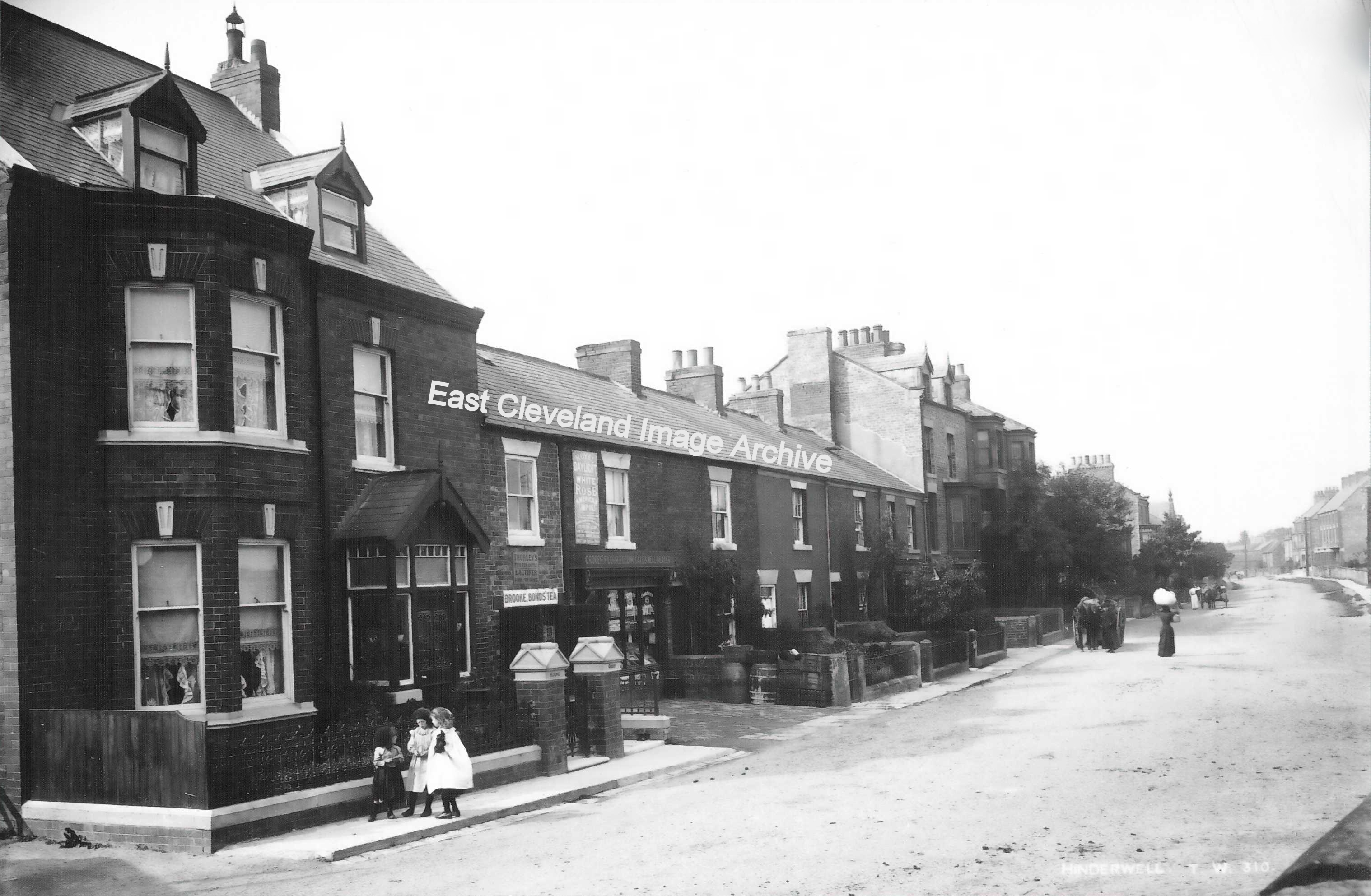
A late Victorian scene in Hinderwell, the lady walking down the road would seem to be carrying a white bundle on her head. Whilst the three girls pass the time away on a day off school?
Image courtesy Maurice Grayson.
|
|
||
 A late Victorian scene in Hinderwell, the lady walking down the road would seem to be carrying a white bundle on her head. Whilst the three girls pass the time away on a day off school? 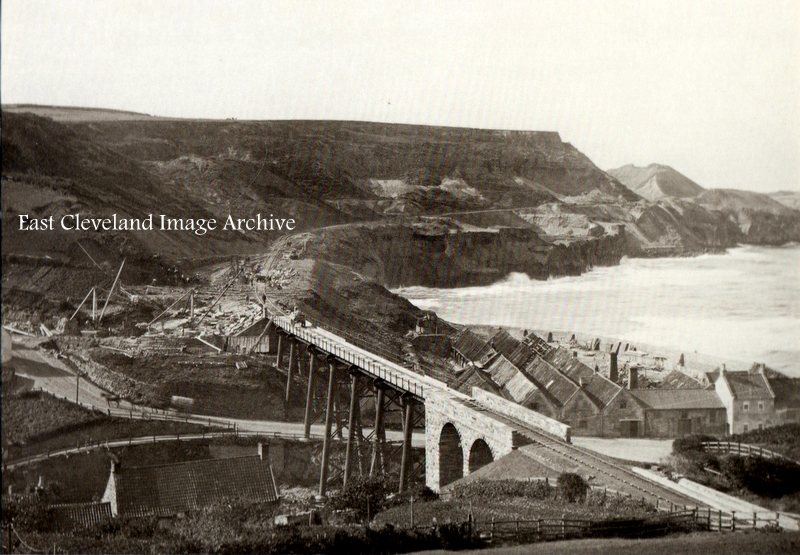 We did not know the date of this photograph, but realised it was the building of the railway and station. Geoff Patton advised us: ” Looking at the block of houses on what would be the beach, now; I heard these were bombed flat during one of the wars. I’d guess the railway station was built mid 19th century.” This made us research further and have found that the station at Sandsend opend 3rd December 1883, thus this image is prior to that date, possibly 1882. We will research further. Image courtesy of Pat Bennison; many thanks to Geoff Patton for his update. 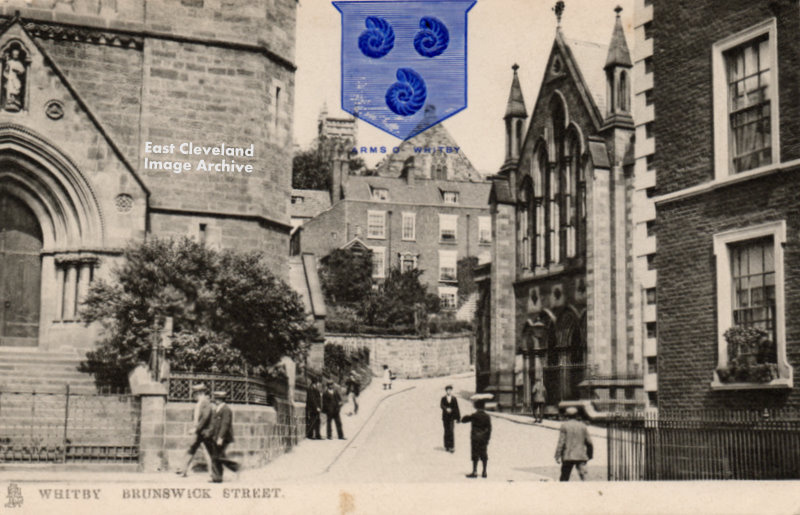 This postcard view of the corner today is little changed, although the end is a one way street, the buildings all remain. Today the church at the top of the photograph on Flowergate has lost it’s tower and I would not recommend standing in the middle of the road! David Richardson tells us: ”The brick building on the right in the foreground was partially demolished to allow the junction between Brunswick Street and Bagdale Road to be widened.” 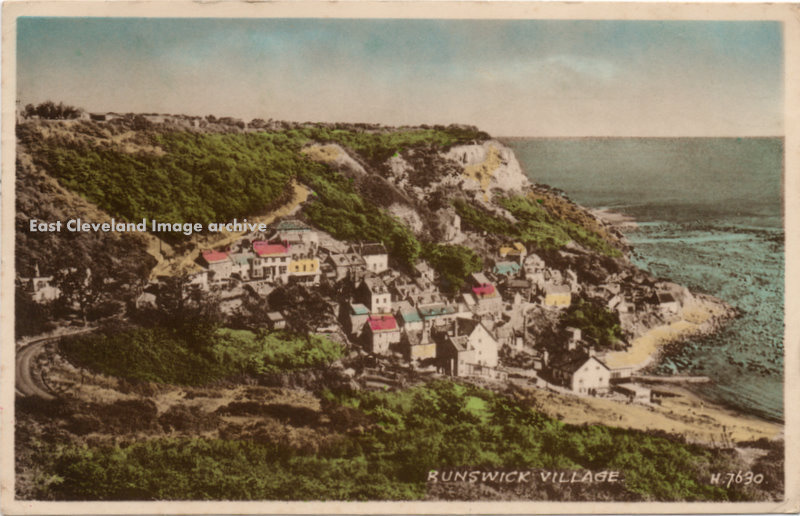 A delightful postcard view of Runswick Bay, complete with the ‘old’ road which led to the village. More recently the more direct route down was developed owing to land slipage. Image courtesy of Ken Johnson. 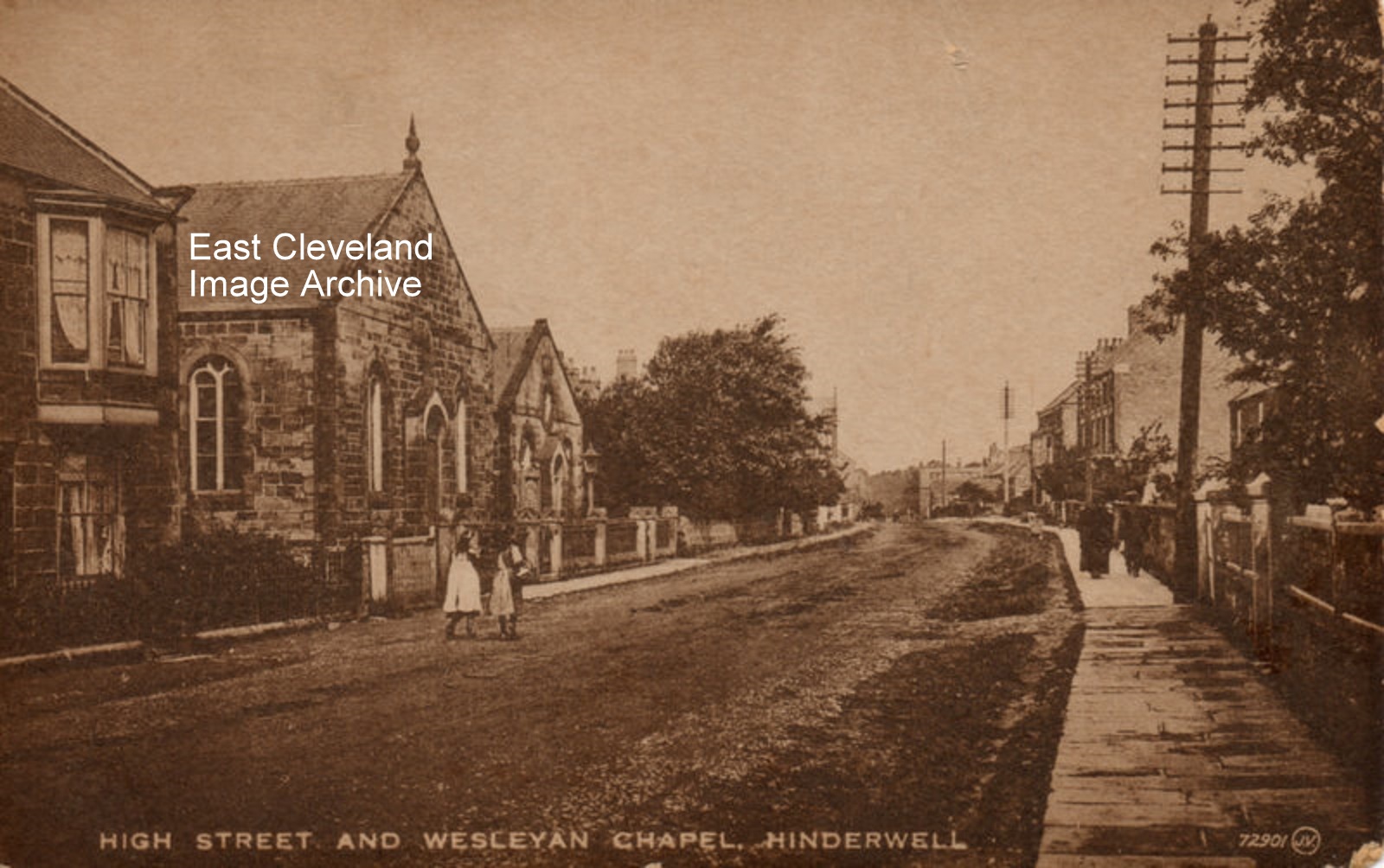 This Valentine’s postcard view of Hinderwell High Street and the Wesleyan Chapel is little altered from the present day, although the road surface was obviously pre the modern day tarmac! Image courtesy of Ken Johnson. 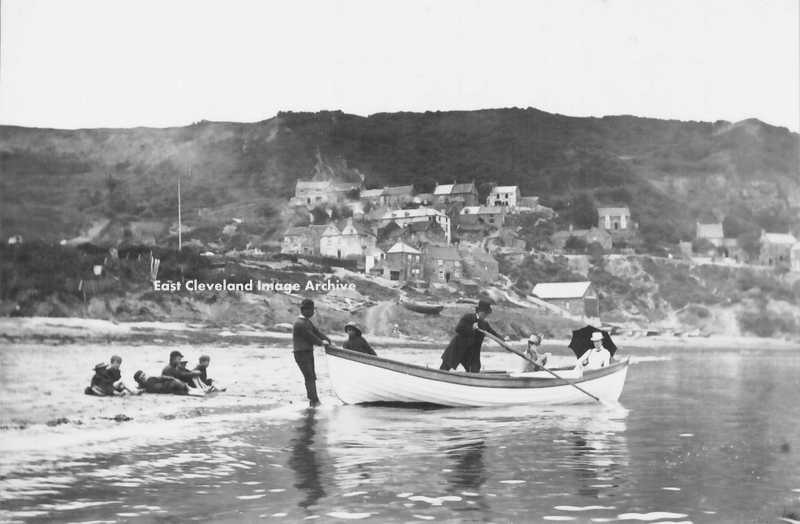 Two elegantly dressed young Edwardian ladies awaiting their overdressed gentleman Image courtesy of Maurice Grayson. 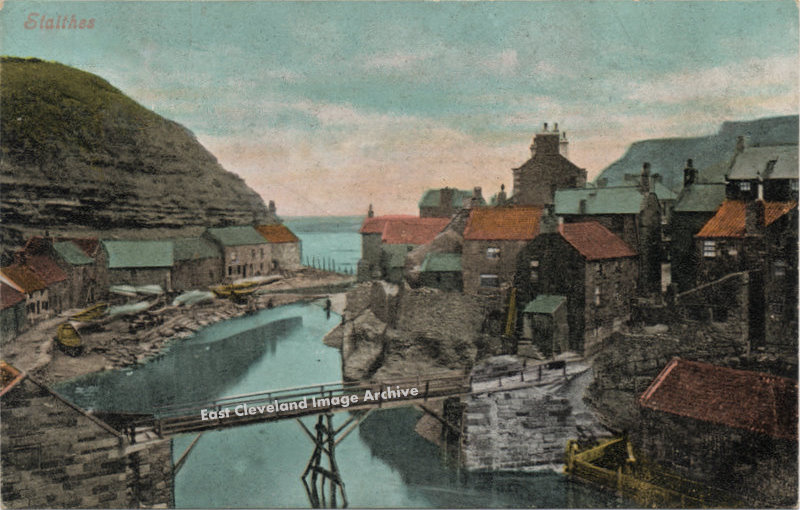 This often pictured bridge is shown to full effect with this hand tinted postcard. It was later replaced with a more sturdy structure, I wonder how many feet have passed over it in the years? Image courtesy of Ken Johnson. 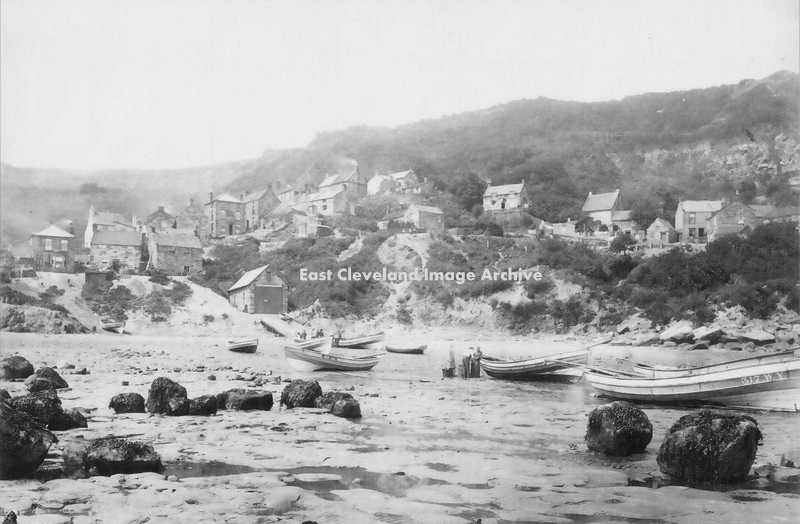 Yorkshire cobles drawn up on the beach at Runswick Bay. The design of high bow for launching off open beaches into sometimes heavy seas and square stern for beaching, was well suited for the North Sea beaches. Clinker planking reflected their Viking ancestry, normally sailed with one dipping lugsail and foresail, larger cobles sometimes added a mizzen sail. 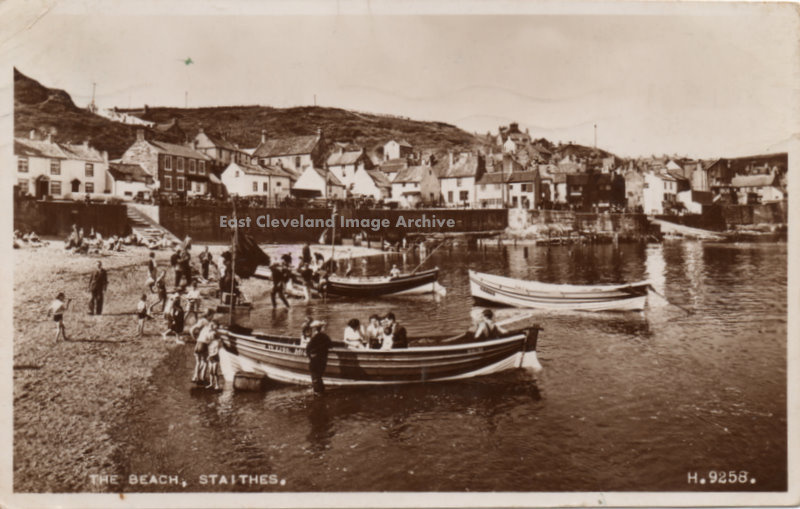 Fishermen at Staithes made a bob or two by taking trippers to sea, for a change when not fishing. Dating from about 1950, this view of the boats could well be such an activity. Margaret Verrill Craggs tells us: ”This is the boat known as ’Runswick Lass’ it belonged to Nelson Verrill and his brother Joseph. They were my uncles and spent many happy summers riding in the boat which took holiday makers for sea trips to see the seals.” Norman Patton also tells us: ”Happy days! My brothers and sisters often visited Auntie Ruth and Uncle Brownie Theaker who lived in “Myrtle Cottage” on the harbour side . The highlight was often to take a trip on one of the fishing boats….our first ever trips to sea!” Judith Hoyle also remembers: ”I was born in 1942 and together with my family remember holidays in Staithes many times. We rented Mizpah Cottage at the very end of the sea wall, I remember a fisherman named Howard but cannot recall if that was his first or last name, but he used to take us on little fishing trips. I also recall a little shop on the front by the harbour as I used to buy little chocolate swiss rolls there with my spending money.” Postcard courtesy Ken Johnson and thanks to Margaret Craggs, Norman Patton and Judith Hoyle for these updates. 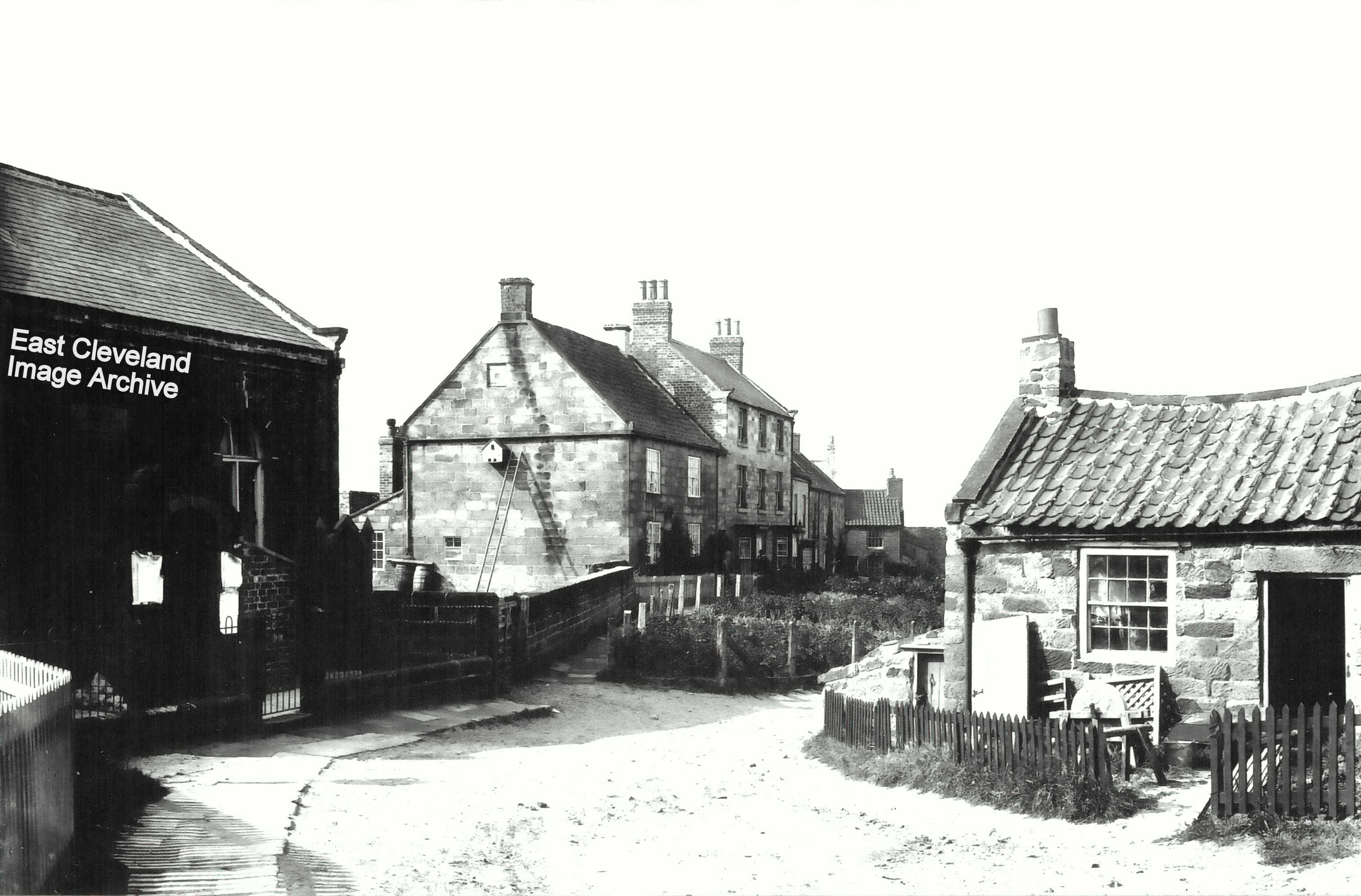 A quiet corner of Hinderwell, Porret Lane; the Primitive Methodist Chapel on the left, opened in 1858. The house in the centre of the image has a ladder leading to a nesting box on the wall, whilst the cottage on the right has a grinding wheel in the garden.
|
||
Recent Comments